Antioxidants
Products for Antioxidants
- Cat.No. Product Name Information
-
GC11123
α-CEHC
A major metabolite of δ-tocopherol

-
GC45601
α-Linolenic Acid ethyl ester-d5

-
GC41502
β-Myrcene
β-Myrcene is a terpene that has been found in Cannabis and has antioxidative properties.

-
GC48317
δ7-Avenasterol
A phytosterol that has antioxidant activities

-
GC45713
(±)-α-Tocopherol Acetate
(±)-α-Tocopherol Acetate ((±)-Vitamin E acetate), is a orally active synthetic form of vitamin E.

-
GC40015
(±)-5,7-Dimethyltocol
(±)-5,7-Dimethyltocol is a form of tocopherol.

-
GC41649
(±)13-HODE cholesteryl ester
(±)13-HODE cholesteryl ester was originally extracted from atherosclerotic lesions and shown to be produced by Cu2+-catalyzed oxidation of LDL.
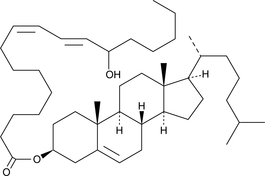
-
GC49690
(3R,5R)-Rosuvastatin (calcium salt)
A potential impurity found in bulk preparations of rosuvastatin
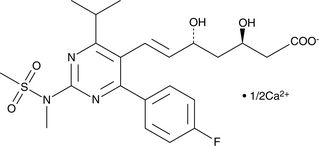
-
GC41700
(E)-2-(2-Chlorostyryl)-3,5,6-trimethylpyrazine
(E)-2-(2-Chlorostyryl)-3,5,6-trimethylpyrazine (CSTMP) is a stilbene derivative with antioxidant and anticancer activities.

-
GC49003
(E)-Ajoene
A disulfide with diverse biological activities

-
GC41837
1,3,7-Trimethyluric Acid
1,3,7-Trimethyluric acid is a methyl derivative of uric acid and a product of C-8 oxidation of caffeine by cytochrome P450 enzymes.

-
GC46387
1,3,7-Trimethyluric Acid-d9
An internal standard for the quantification of 1,3,7-trimethyluric acid

-
GC18235
1-O-Hexadecyl-sn-glycerol
1-O-Hexadecyl-sn-glycerol is a bioactive alkyl glyceryl ether.
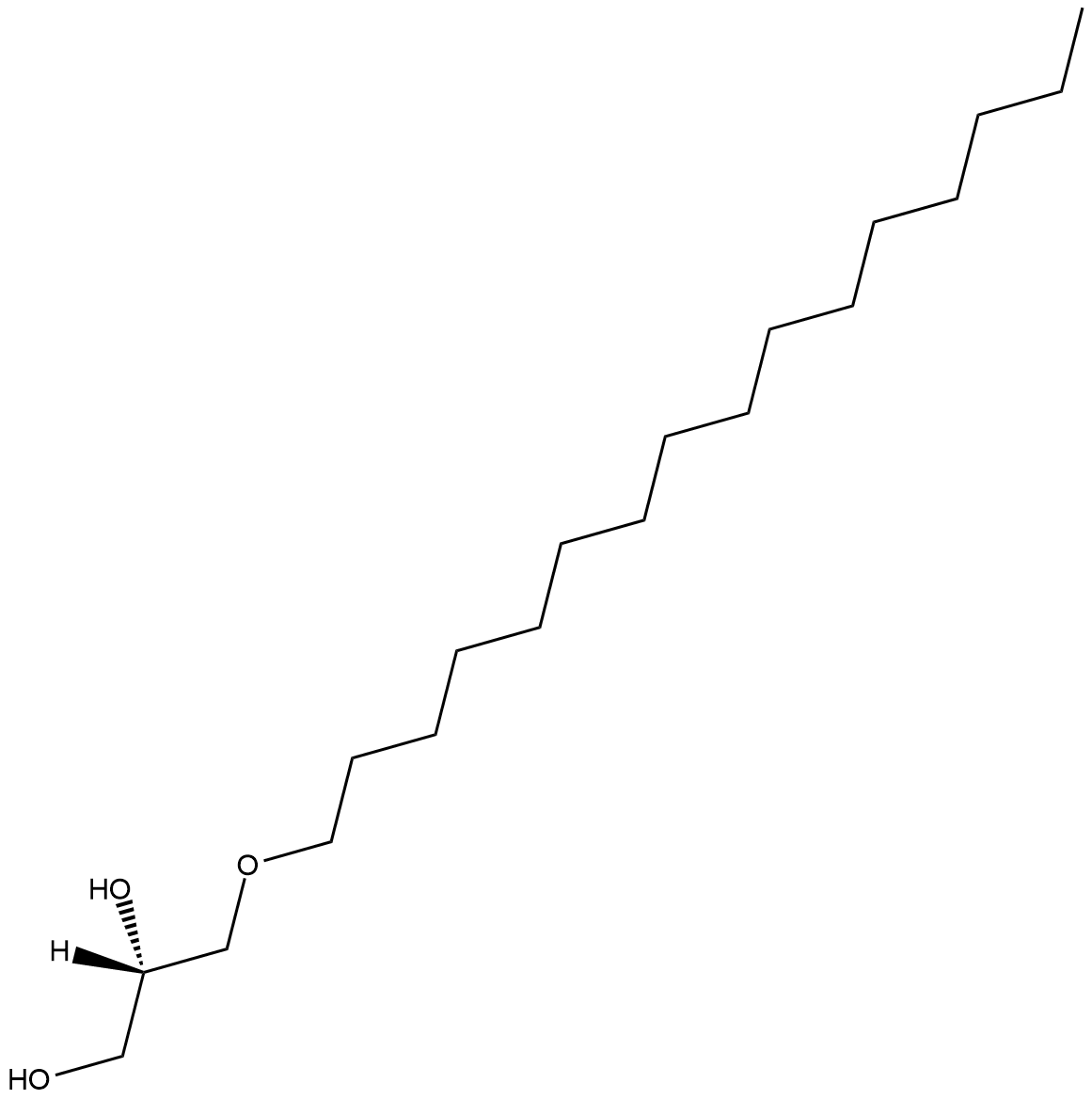
-
GC40146
1-Oleoyl-2-Palmitoyl-rac-glycerol
1-Oleoyl-2-palmitoyl-rac-glycerol (1,2-OP) is a diacylglycerol containing oleic acid at the sn-1 position and palmitic acid at the sn-2 position.

-
GC48782
10,13-epoxy-11-methyl-Octadecadienoic Acid
A furan fatty acid

-
GC41866
10-methyl-9-(phenoxycarbonyl) Acridinium (trifluoromethylsulfonate)
10-methyl-9-(phenoxycarbonyl) Acridinium is an acridinium ester that produces fluorescent 10-methyl-9-acridone upon oxidation with hydrogen peroxide, persulfates, and other oxidants in alkaline conditions.

-
GC46452
16-Oxokahweol
A synthetic diterpene

-
GC46057
2,5-Dihydroxycinnamic Acid phenethyl ester
An inhibitor of 5-LO

-
GC40503
2-HOBA
2-HOBA (2-HOBA) a selective dicarbonyl scavenger, is an antioxidant and scavanger of free radicals and isolevuglandins (IsoLGs).

-
GC49172
2-hydroxy Estrone
An active metabolite of estrone

-
GC42195
2-Thiobarbituric Acid
2-Thiobarbituric acid is a colorimetric reagent commonly used in the detection of malondialdehyde (MDA), a marker of lipid peroxidation.

-
GC49005
2S-Eriodictyol
A flavanone with antioxidant activity

-
GC40618
3',4',7-Trihydroxyisoflavone
3',4',7-Trihydroxyisoflavone, a major metabolite of Daidzein, is an ATP-competitive inhibitor of Cot (Tpl2/MAP3K8) and MKK4. 3',4',7-Trihydroxyisoflavone has anticancer, anti-angiogenic, chemoprotective, and free radical scavenging activities.

-
GC42203
3,4',5-Trismethoxybenzophenone
Resveratrol is a potent phenolic antioxidant found in natural sources that has antiproliferative activity.

-
GC46557
3,4-Dihydroquinolin-2(1H)-one
A building block

-
GC46577
3,5-Dihydroxybenzaldehyde
A building block

-
GC18205
3,5-Diiodothyroacetic Acid
3,5-Diiodothyroacetic acid (diac) is the acetic acid variant of thyroxine.
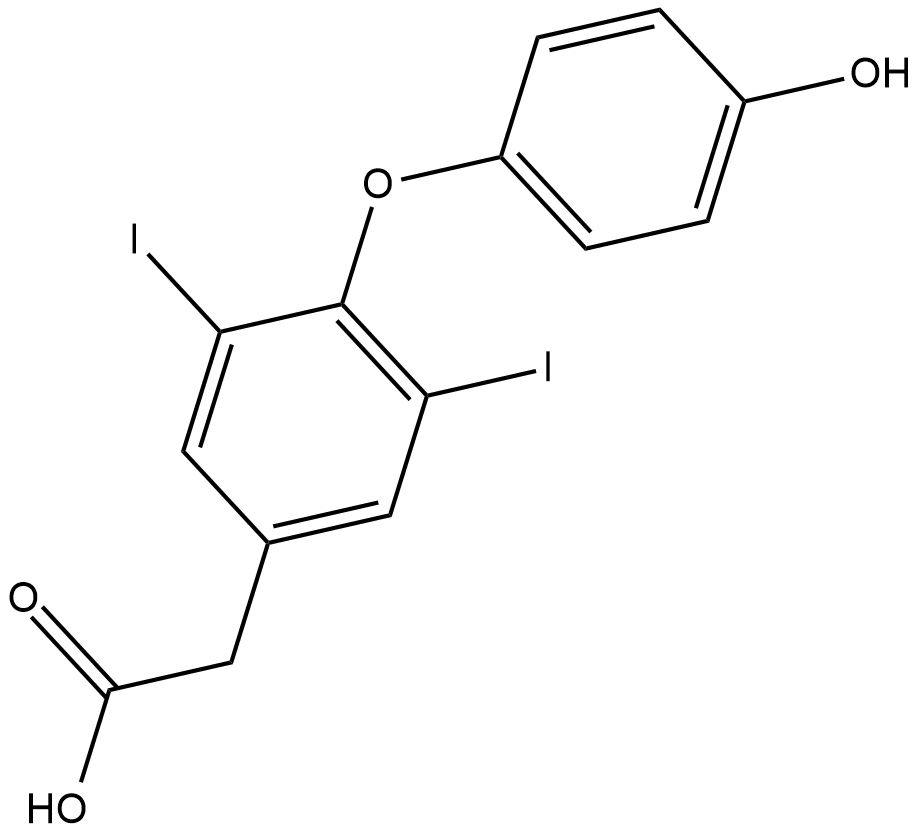
-
GC52324
3-(3-Hydroxyphenyl)propionic Acid sulfate
A metabolite of certain phenols and glycosides

-
GC49849
3-Aminosalicylic Acid
A salicylic acid derivative

-
GC13377
3-hydroxy Anthranilic Acid
co-antioxidant
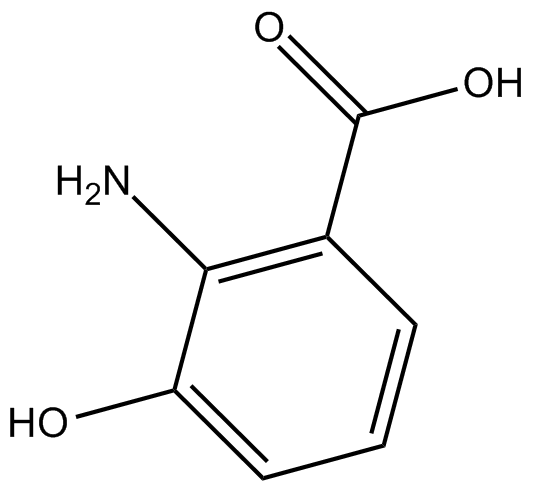
-
GC49364
3-Hydroxycoumarin
A coumarin with diverse biological activities

-
GC45337
3-Hydroxyterphenyllin
3-Hydroxyterphenyllin is a metabolite of Aspergillus candidus.3-Hydroxyterphenyllin suppresses proliferation and causes cytotoxicity against A2780/CP70 and OVCAR-3 cells. 3-Hydroxyterphenyllin induces S phase arrest and apoptosis. 3-Hydroxyterphenyllin has the potential for the research of ovarian cancer.

-
GC42338
4-Aminobenzoic Acid hydrazide
4-Aminobenzoic Acid hydrazide is an irreversible MPO myeloperoxidase inhibitor with an IC50 of 0.3 μM.

-
GC48824
4-hydroxy Estrone
A metabolite of estrone

-
GC52227
5-(3',4'-Dihydroxyphenyl)-γ-Valerolactone
An active metabolite of various polyphenols

-
GC52413
5-Aminosalicylic Acid-d7
An internal standard for the quantification of 5-aminosalicylic acid

-
GC49233
5-Feruloylquinic Acid
A chlorogenic acid with antioxidant activity

-
GC46033
5-Heneicosylresorcinol
An alkylresorcinol

-
GC42563
5-methyl-2-HOBA (hydrochloride)
5-methyl-2-HOBA is an isoketal scavenger.

-
GC46079
5-Tricosylresorcinol
5-Tricosylresorcinolthe is the first cyst lipid.

-
GC46720
6,9-Dichloro-1,2,3,4-tetrahydroacridine
A synthetic intermediate in the synthesis of AChE inhibitors

-
GC46080
7,3',4'-Trihydroxyflavone
7,3',4'-Trihydroxyflavone is a flavonoid aglycon compound isolated from broad bean pods.

-
GC45960
9c(i472)
9c(i472) is a potent inhibitor of 15-LOX-1 (15-lipoxygenase-1) with an IC50 value of 0.19 μM.

-
GC41371
AFMK
Melatonin is a neurotransmitter widely distributed in eukaryotes and is closely linked to circadean rhythms in mammals including humans.

-
GC40024
Altenusin
Altenusin is a polyphenol fungal metabolite originally isolated from the fungus Alternaria that has diverse biological activities.

-
GC49336
AMK (hydrochloride)
An active metabolite of melatonin

-
GC46845
Amlodipine-d4 (maleate)
An internal standard for the quantification of amlodipine

-
GC42805
AN-7
α-Lipoic acid is a cyclic disulfide antioxidant that interconverts with its reduced dithiol form.
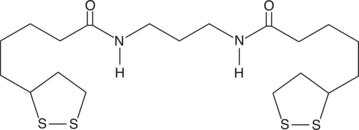
-
GC41531
Anacardic Acid Triene
Anacardic acid triene is a polyunsaturated form of anacardic acid that has been found in cashew nut shell liquid.

-
GC42823
AP39
AP39 is a compound used to increase the levels of hydrogen sulfide (H2S) within mitochondria.

-
GC52332
Arimoclomol
A co-inducer of heat shock proteins

-
GC49103
Aromadendrene
A sesquiterpene with diverse biological activities

-
GC49783
Ascorbyl Tetraisopalmitate
A vitamin C derivative

-
GC40848
Aspalatone
Aspalatone is an anti-platelet aggregator (IC50 = 180 μM, in vitro) that prolongs bleeding time significantly in a rodent model of thromboembolism.

-
GC46090
Aspulvinone O
A fungal metabolite

-
GC46897
AUTEN-99
AUTEN-99 (hydrobromide) is a novel inhibitor of the myotubularin phosphatase Jumpy (also called MTMR14).

-
GC18580
B355252
A neuroprotective agent
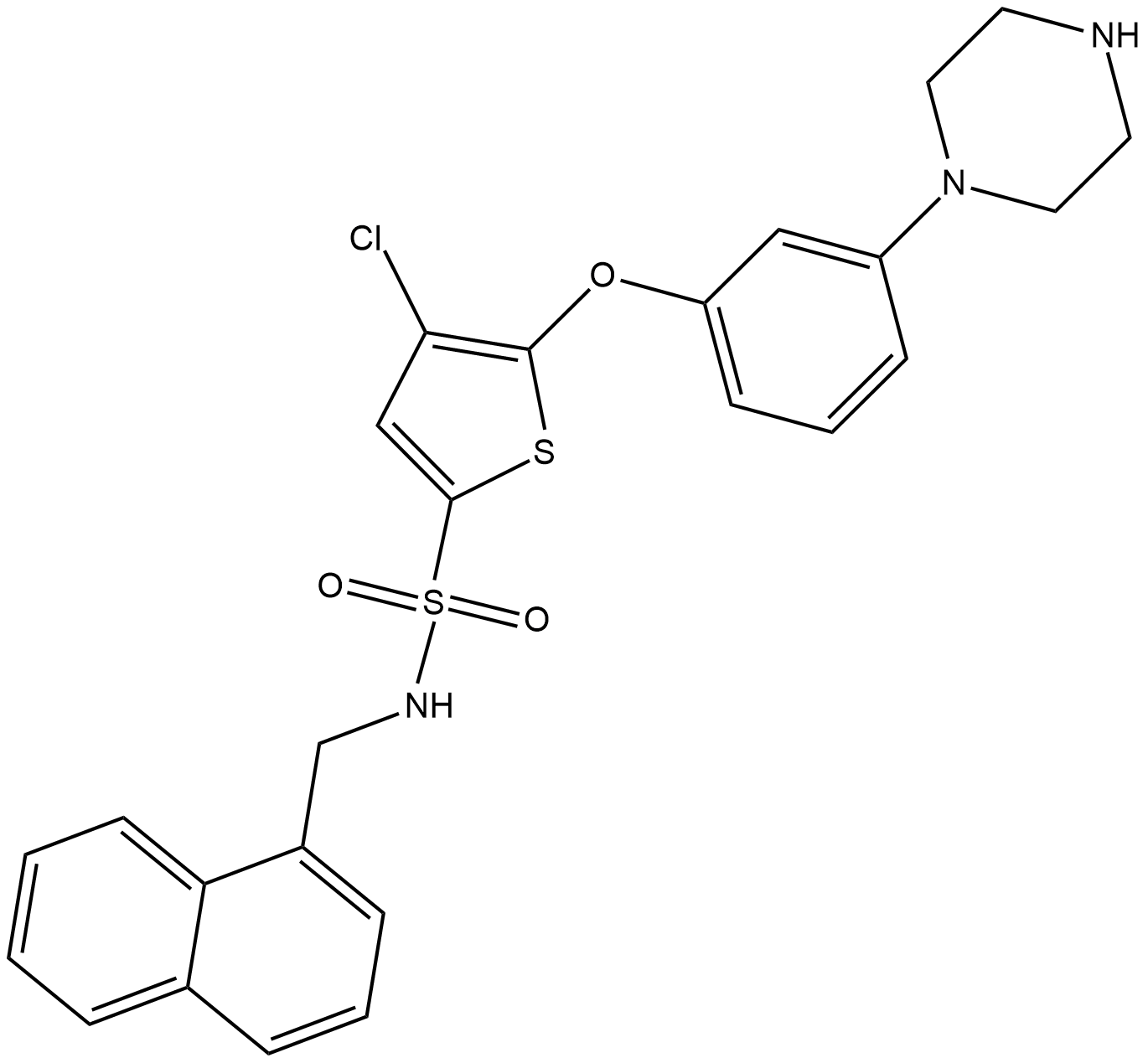
-
GC42931
Bilirubin Conjugate (sodium salt)
Bilirubin Conjugate (sodium salt) is a ditaurate derivative of Bilirubin.

-
GC42932
Biliverdin (hydrochloride)
Biliverdin is a green bile pigment produced from the oxidation of heme in a reaction catalyzed by heme oxygenase and is further reduced to bilirubin by biliverdin reductase.

-
GC49708
Biliverdin (technical grade)
A bile pigment

-
GC52101
Brazilein
Brazilein is an important immunosuppressive component isolated from Caesalpinia sappan L.

-
GC46105
Butyrolactone II
A fungal metabolite

-
GC46106
Butyrolactone V
A fungal metabolite

-
GC43139
Capsanthin
Capsanthin is a carotenoid that has been found in red paprika and has diverse biological activities.

-
GC49415
Capsorubin
A carotenoid with diverse biological activities

-
GC47044
Carotenoid Mixture
A mixture of carotenoids

-
GC43160
CAY10485
Acyl-coenzyme A: cholesterol acyltransferase-1 and -2 (ACAT-1 and ACAT-2) catalyze the formation of cholesterol esters from cholesterol and long chain fatty acyl-coenzyme A, and may play a role in the development of atherosclerosis.
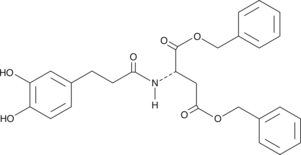
-
GC41636
CAY10487
The early stage of atherosclerosis is characterized by the aggregation of foam cells, so called a fatty streak, in the inner arterial wall.

-
GC43165
CAY10512
The nuclear factor-κB (NF-κB) regulates the expression of numerous genes involved in immunity and inflammation, cellular stress responses, growth, and apoptosis.
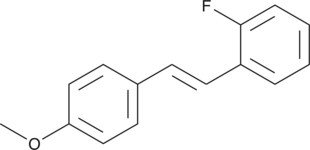
-
GC18530
CAY10616
Resveratrol is a natural polyphenolic antioxidant that has anti-cancer properties.
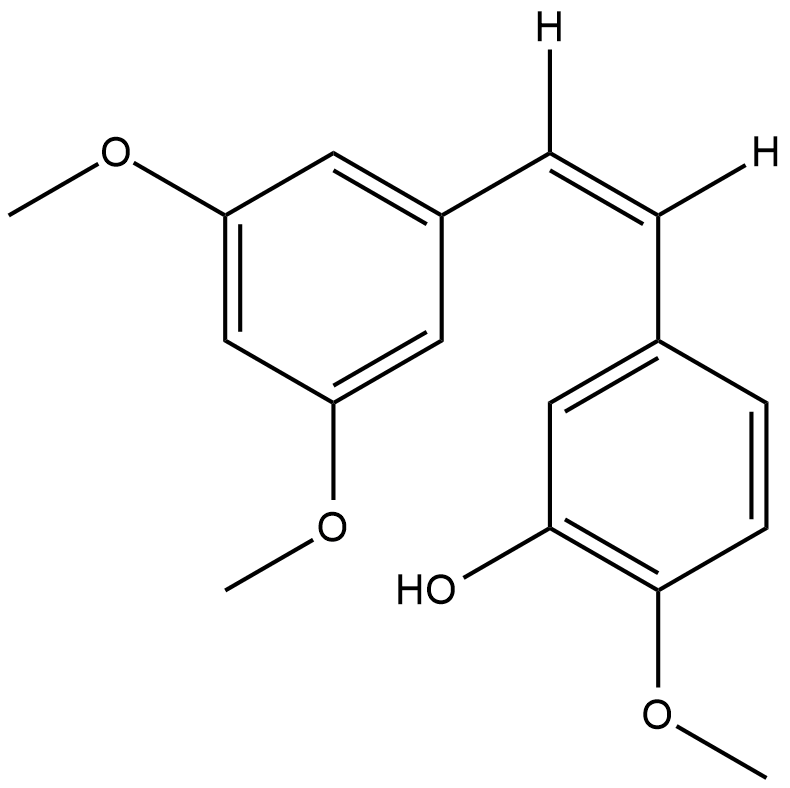
-
GC47053
CAY10746
A ROCK1 and ROCK2 inhibitor

-
GC47060
CAY10762
An inhibitor of MAGL

-
GC52081
Chamazulene
Chamazulene is a terpene that has been found in chamomile (M. recutita) flowers and has anti-inflammatory and antioxidant activities.

-
GC40632
CMS121
A substituted quinoline with diverse biological activities

-
GC47116
Coenzyme Q10-d6
An internal standard for the quantification of CoQ10

-
GC43297
Coenzyme Q2
Coenzyme Q10 is a component of the electron transport chain and participates in aerobic cellular respiration, generating energy in the form of ATP.

-
GC52278
Creatine Phosphate (sodium salt hydrate)
A phosphorylated form of creatine

-
GC43329
Cu-ATSM
The metallo-protein Cu/Zn-superoxide dismutase (SOD1) is a ubiquitous enzyme responsible for scavenging superoxide radicals.

-
GC52164
Cu-ATSP
Cu-ATSP, a potent inhibitor of ferroptotic cell death, is almost 20-fold more potent than CuATSM.

-
GC43335
Cyanidin 3-O-arabinoside
Cyanidin 3-O-arabinoside is an anthocyanin antioxidant that has been found in eggplant.

-
GC47138
Cyclizine (hydrochloride)
A histamine H1 receptor antagonist

-
GC18488
Cyclo(L-Leu-L-Trp)
Cyclo(L-Leu-L-Trp) is a diketopiperazine metabolite originally isolated from Penicillium.
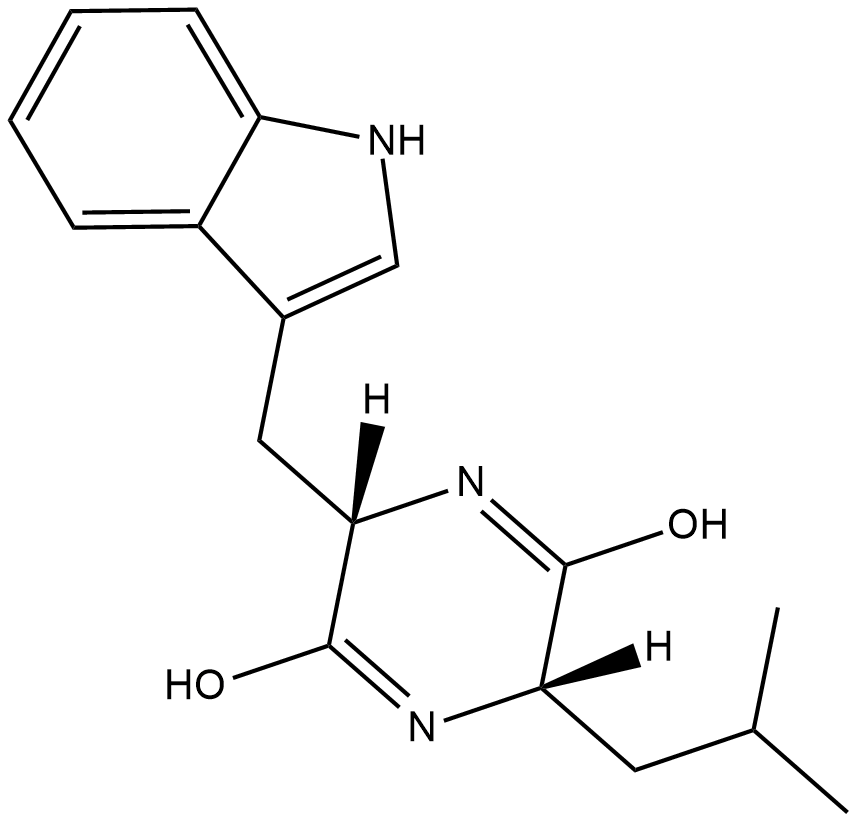
-
GC45877
CYM 5478
An S1P2 agonist

-
GC49868
D-α-Tocopheryl Quinone
An oxidative metabolite of vitamin E

-
GC43504
D-myo-Inositol-1,2,3,4,5,6-hexaphosphate (sodium salt)
Phytic acid (Inositol hexaphosphate) hexasodium is a phosphorus storage compound of seeds and cereal grains.

-
GC18869
Deoxyenterocin
Deoxyenterocin is a bacterial metabolite originally isolated from Streptomyces that has diverse biological activities, including antibiotic, antiviral, and antioxidant properties.
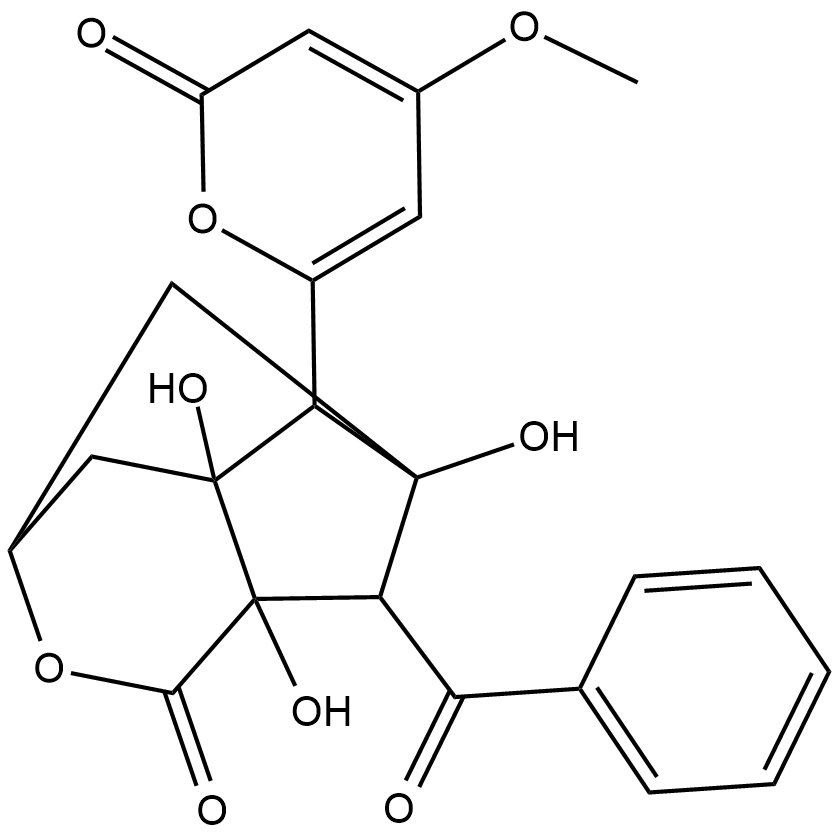
-
GC46128
Deoxygerfelin
A phenolic antioxidant

-
GC45992
Diallyl Tetrasulfide
An organosulfur compound with diverse biological activities

-
GC18517
Diapocynin
Diapocynin is the dimeric form of the NADPH oxidase inhibitor apocynin that has anti-inflammatory and antioxidant activities.
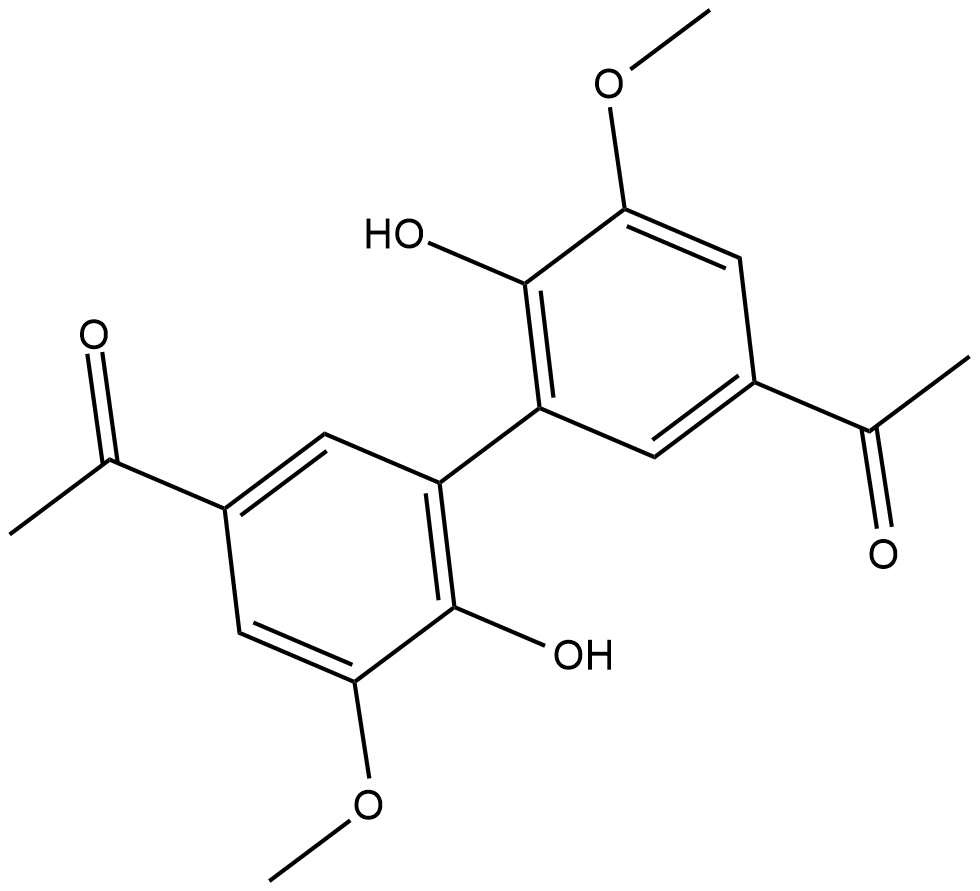
-
GC12266
Didox
synthetic antioxidant
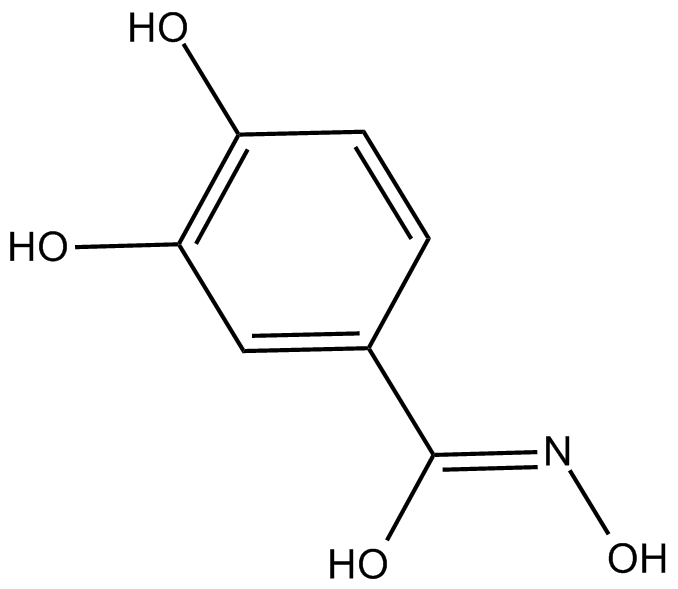
-
GC45662
Dieugenol
A neolignan with antioxidative and antiparasitic activities

-
GC18456
Digallic Acid
Digallic acid is a natural polyphenolic that can be produced by hydrolysis of gallotannins.
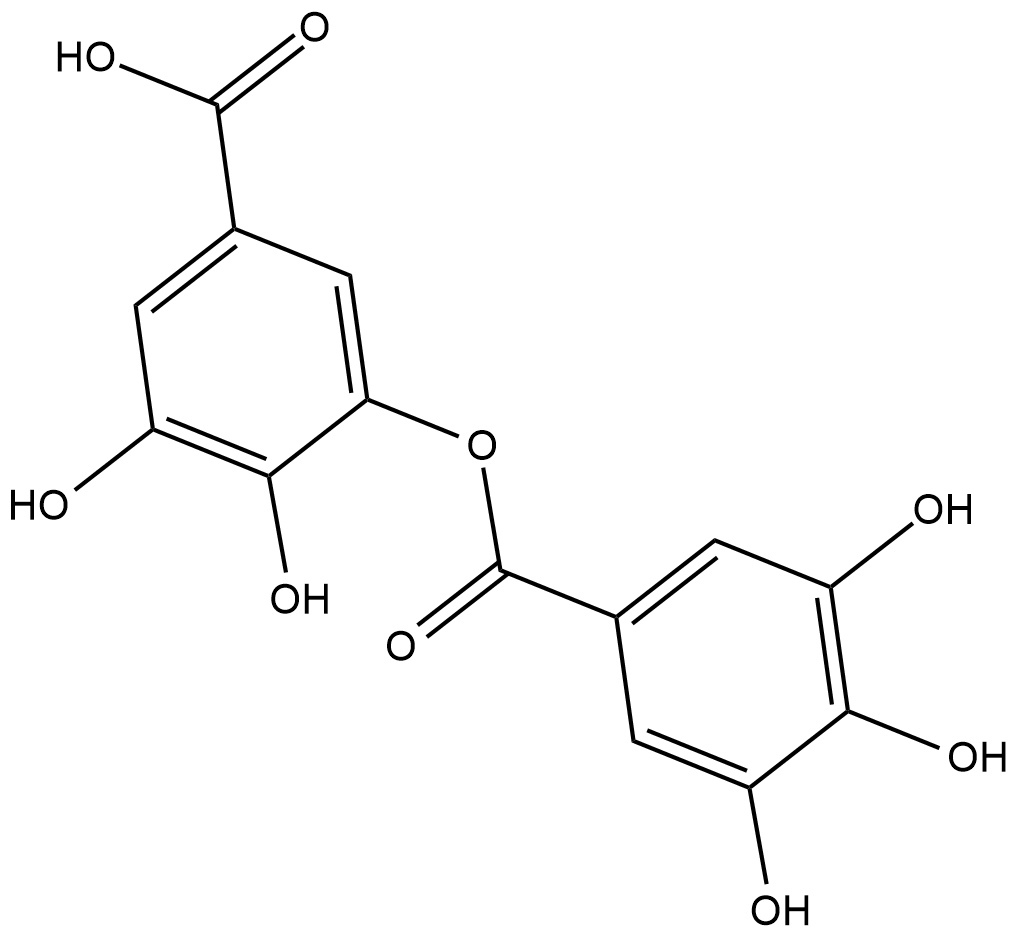
-
GC43462
Dihydrolipoic Acid
Dihydrolipoic acid (DHLA) is a dithiol-containing carboxylic acid that is the reduced form of α-lipoic acid.

-
GC40629
Dimethoxycurcumin
Naturally occurring phytochemicals such as turmeric (curcumin) have been found to inhibit the growth of tumor cells.

-
GC47234
Diosmetin-d3
An internal standard for the quantification of diosmetin

-
GC43488
DL-erythro/threo Sphinganine (d16:0)
DL-erythro/threo Sphinganine (d16:0) is a sphingolipid that is decreased in rats following long-term, low-dose administration of dimethoate and is used as a biomarker for dimethoate exposure.

-
GC52368
DL-Sulforaphane Glutathione
A metabolite of sulforaphane

-
GC43493
DL-Sulforaphane N-acetyl-L-cysteine
Nrf2 activation of the antioxidant response element (ARE) is central to cytoprotective gene expression against oxidative and/or electrophilic stress.

-
GC43569
DPPP
DPPP (DPPP) is a fluoregenic peroxide reactive probe.
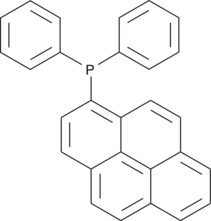
-
GC48650
DTUN
A lipophilic hyponitrite radical initiator



